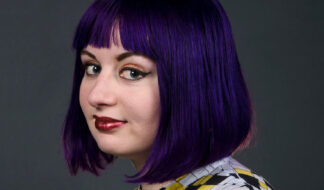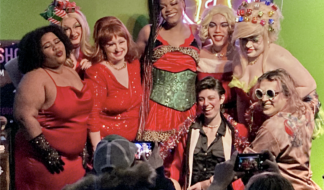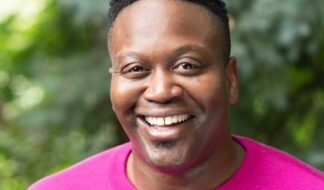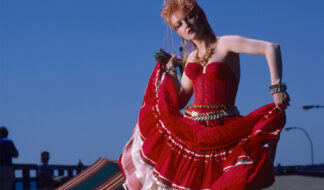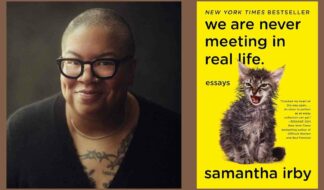When Annaliese Wilbur Returns to the Fisher Theatre, This Time They’ll Be on Stage
Wilbur on their full circle journey and why they feel queer representation in artistic performance is so important
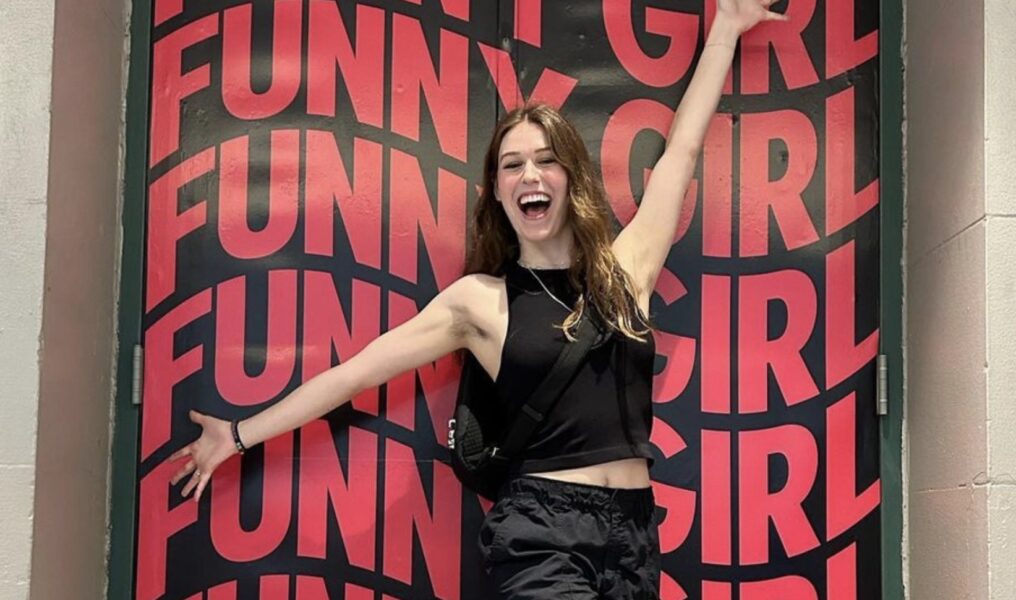
When actor, singer and dancer Annaliese Wilbur takes the Fisher Theatre stage on Sept. 26 as part of the Broadway touring cast of “Funny Girl,” which runs through Oct. 8, it will be a full circle moment for the Bloomfield Hills native.
Wilbur, who uses they/them pronouns, saw their first Broadway show, a production of “The Lion King,” around age 5 at the theater. “I stood up the whole show, gripping the chair in front of me, and I was breathing down the neck of the guy sitting in front of me while in my state of absolute awe,” Wilbur recalls. “Thankfully, he thought it was hilarious and let me keep my face in the nook between chairs so I could get the ultimate view of ‘The Lion King.’ My heart goes out to that guy still to this day — I wish I could thank him.”
The experience ignited a spark of curiosity, but when Wilbur graduated from Bloomfield Hills High School, they planned to become an engineer — the career path fit their interests and abilities and made a lot of sense coming from an automotive family in Metro Detroit. As college unfolded in Syracuse, New York, Wilbur would come to realize they were more interested in neuroscience and decided to add a minor in musical theater. Soon enough, it was clear there was nowhere they’d rather be than on a stage. The minor became a major, and Wilbur wrapped up their BFA at the prestigious Boston Conservatory at Berklee College of Music.
Wilbur dived headlong into their studies in Boston, honing their skills in dance, songwriting, singing, choreography, piano, violin, guitar and acting. On their website, they theorize that acting is the “physical embodiment of neuroscience and behavioral observation. Looking back, maybe [I] never changed career paths at all,” they write.
Wilbur took some time out of their exhausting rehearsal schedule ahead of the “Funny Girl” premiere, where they will play a swing role, to chat about their journey to the stage, why they feel LGBTQ+ representation is critical these days and why they view their neurodivergence as a “superpower” when it comes to their unique role in the production.
How is your preparation going for “Funny Girl”?
“Funny Girl” rehearsals have been a dream come true and the greatest artistic and physical challenge I’ve encountered thus far. To be in the room with such powerful women leading the artistic team is a rare gift, and it creates a space with infectious joy, bottomless loads of empathy, emphasis on respect, inclusivity, and an incredibly driven environment. I am so lucky that every day when we rehearse, we get to stand in front of at least six women at the tables in the front of the room.
I have idolized Ayodele Casel and Dre Torres in particular for years as a tap dancer first, growing up. The sheer fact that I get to work with my tap and queer idols Ayodele [Casel] and Dre [Torres] — who are some of the most innovative and captivating performers, choreographers, artistic geniuses and powerfully humble leaders — is an inexplicable feeling.
This show is my dream show. The tap dance is my dream choreography, the theater dance choreography fills my soul with joy. And this story? It hits home.
What can audiences expect from the show?
This show is going to be a beautiful evolution from the Broadway version. There are many tributes to the old Vaudeville style of musicals. The show is just bedazzling. My two favorite parts everyone should look forward to, however, are the fact that this show was led and influenced by a female-heavy artistic team and pays homage to tap’s Black history. Having a female-prevalent creative team for “Funny Girl” gives depth and relatability to this female-led story. The women on this team — especially the queer, Jewish, Black and Latina women — have been the greatest gift the Broadway industry could have given to this show and any show, in my opinion.
What does it mean to be a “swing” performer?
My job as a swing calls for memorizing where each and every “girl” performer is located on stage for dance choreography and scenes, as well as their transitions, lines, vocal parts, entrances, exits, costumes and partner work. It’s quite literally a huge responsibility, but the interesting part is that swings are usually off-stage during all shows. A swing’s true purpose is to be the emergency glue that holds the show together in states of emergency or low coverage. So whenever you see a little slip of paper in your playbill that says, “At this performance, the role usually played by ‘Blank’ will be played by ‘Blank,'” just know a swing is working their magic!
Being neurodivergent is my greatest strength as a “swing” for this show. Honestly, my ADHD gives me the ability to be hyperactive for eight hours straight, use pattern analysis to draw coded diagrams with meticulous detail, and one of the most useful skills it gives me is partial photographic memory to memorize travel patterns and choreography, which has been my greatest blessing. It makes multi-tasking incredibly efficient, which is funny because my ADHD used to make learning and holding my attention for long periods of time one of the most difficult things about my day, especially in school, and I used to feel a lot of shame for not being able to control it.
Now, in rehearsals, my ADHD is my superpower, and I feel incredibly prepared for the eight tracks I cover. I couldn’t be more grateful to think differently but also to be surrounded, supported and helped by incredibly driven and creative thinkers such as my co-swings Zoey Lytle, Bryan Charles Moore and Vinny Andaloro.
How did you wind up going from neuroscience to theater performer?
I grew up with my parents strongly encouraging me to be an engineer or a doctor, so when I started getting interested in theater, they made me a deal that I was only allowed to pursue theater in college if I double majored in musical theater and either engineering or neuroscience.
But after only a month in the neuroscience program at Syracuse University, I knew I wanted to switch to majoring solely in theater. So I began an application to Syracuse’s musical theater program and also begged my parents to let me audition for a conservatory. After some convincing from my uncle, my parents allowed me to apply to one conservatory program: Boston Conservatory.
I always love watching people’s faces when I tell them I transferred from the neuroscience program at Syracuse University before I pursued musical theater at the Boston Conservatory because their faces always look bewildered. I usually get, “Wow! Neuroscience and theater? Those are polar opposites!” but funny enough, acting to me has always been the physical and emotional manifestation of neuroscience, of psychology.
Behavioral observation, personality traits, mirror neurons, the id versus ego versus superego — they’re all incorporated in acting because every living thing on earth has a relationship with other living things around it, as well as needs and wants. I find it amazing that people think acting is lying or that theater doesn’t tell true stories. The best theater and acting I’ve ever seen is when you can’t even tell the actor is there because they have become their character.
That’s why I love musical theater so much — theater storytelling combines my passion for musicianship and my curiosity about psychology.
When did you realize you don’t identify along binary gender lines?
The first time I realized I didn’t identify along binary gender lines was actually at Syracuse, which I love and miss so much. I joined a theater club for non-theater majors called First Year Players and was cast in the role of Race for their production of “Newsies.” Race is a typically male-played, cigar-smokin’, sassy Newsie who sings “King of New York” and tap dances.
Still to date, Race is my favorite role I’ve ever played. Playing Race was my first encounter with gender expression because I remember them offering me the option to play a gender-bent Race in a “Newsie girl” skirt instead of a newsboy if that was more comfortable for me, and I declined because I was happier playing a boy. In many ways, I have felt more like a boy in my life than a girl, speaking in binaries. So I went onstage and got to be a masc-presenting character in pants and suspenders, and of course, a stage cigar.
This was the first time I realized my comfortability in this masculine role had to do with my sexuality too, which had pretty much been undiscovered for 19 years. “Newsies” changed my life because it reaffirmed my gender expression and was the first positive introduction and intimate interaction I had with queer and genderfluid people.
Reuniting with tap dance in “Newsies" after such a long hiatus in high school saved my life. Tap dancing has always been there for me in my lowest moments. I regard tap dance as being one of the few art forms in the world that is truly genderless and accepting of all people and backgrounds.
In the words of the great Gregory Hines, “We do not judge each other, we love each other. If you have a pair of tap shoes, you’re in. No dues to pay, not one of those things where you have to tap like somebody else, or tap the way tap must be done. If you want it, we want you.” As a nonbinary masc lesbian, this quote is such a breath of fresh air and truly reaffirms why tap dance, in my opinion, is the greatest art form and community on Earth.
As a nonbinary masc lesbian and public performer, do you think about LGBTQ+ representation?
I think about LGBTQ+ representation in theater and beyond almost as often as breathing. I spent most of the past few years having a hard time finding masculine lesbians and genderfluid people in audition rooms and dance classes — especially the artistic team “behind the table.” It’s so rare to find inside and outside the theater community, which is why rehearsing with “Funny Girl” is such a blessing. One day, there will be more nonbinary government representatives, more queer people representing leaders in religious organizations and LGBTQ+ people in positions of leadership, power, and mentorship — I believe it.
With today’s state, though, we all just have to be patient with ourselves and others, give ourselves grace and forgiveness, lead with love and demand the human protections that are rightfully ours. Representation is always important. Everyone wants to be able to see themselves in TV shows and books and Broadway shows and positions of leadership. It’s always a joy to aspire to be someone who you identify similarly to; that’s why I geek out so hard that I work with Ayodele and Dre because their representation matters so much to me.
Everyone wants to be seen, and everyone wants to be represented and represented accurately. It is human nature.

